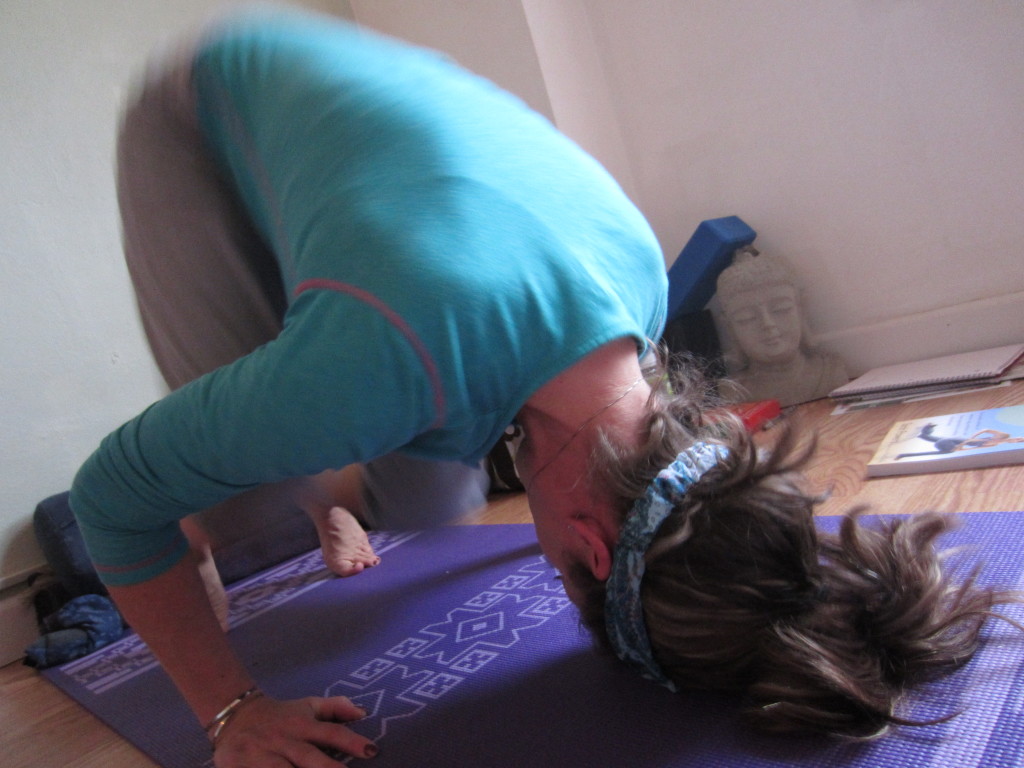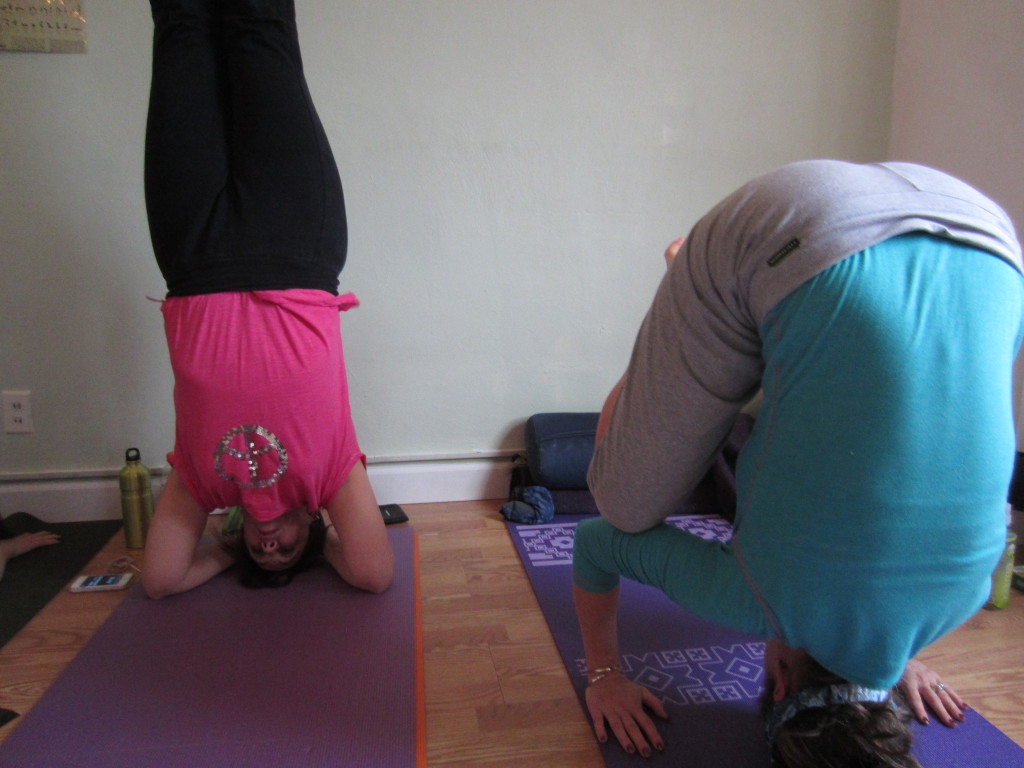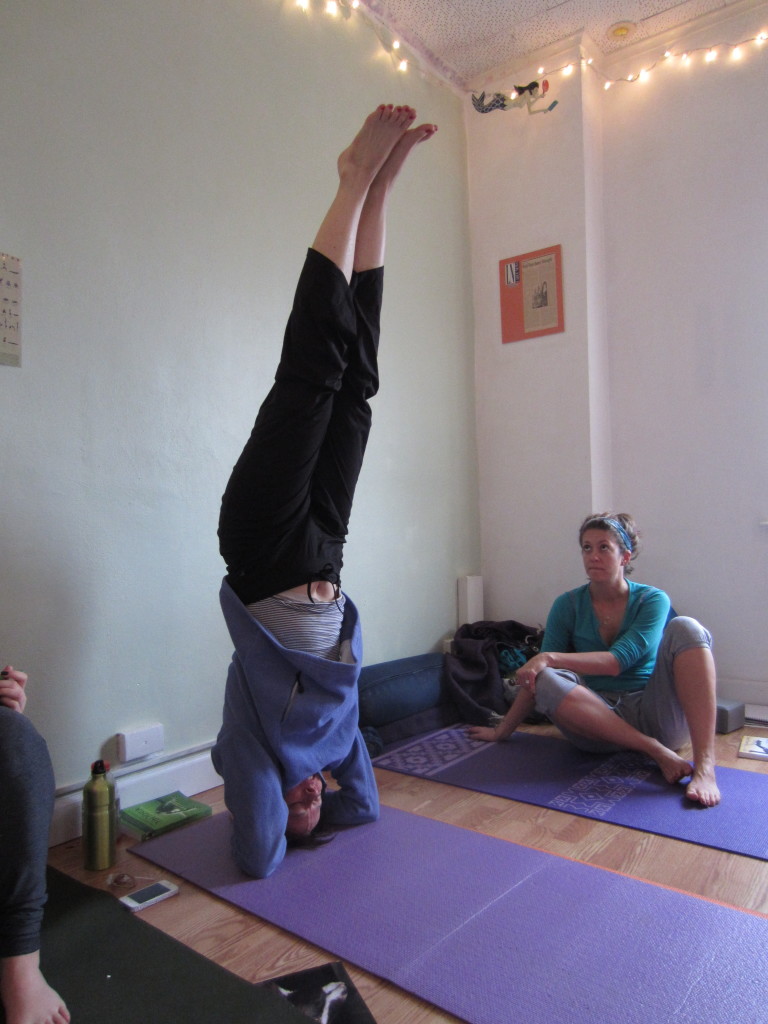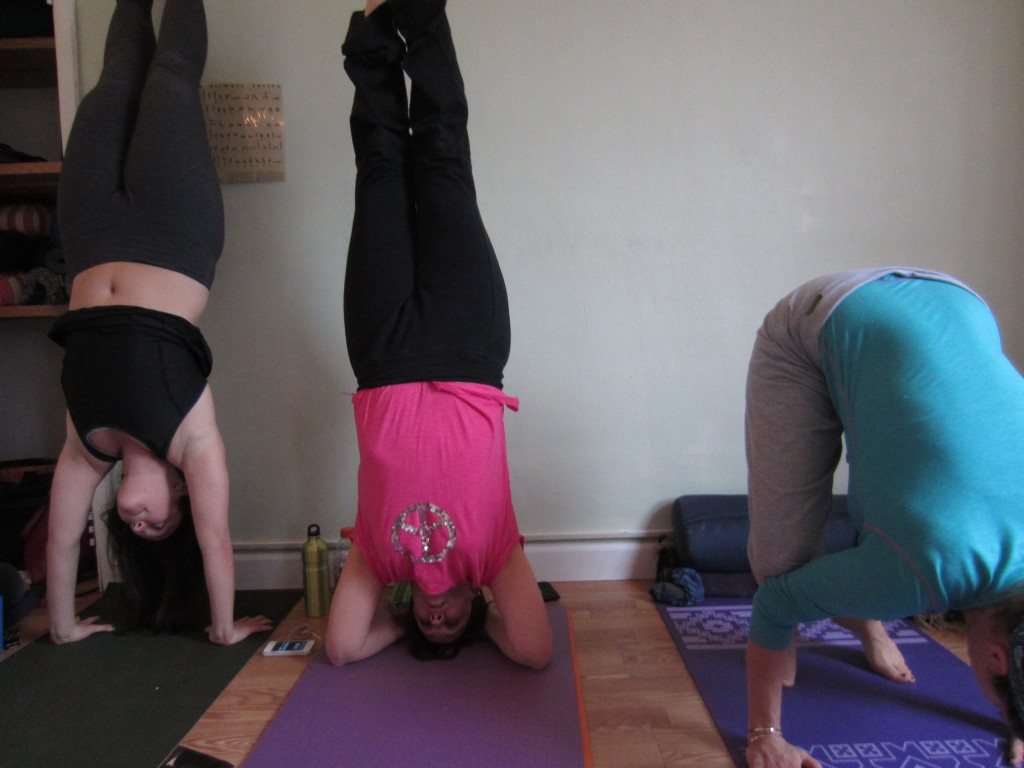Headstand and Adjustments

Legs at the Wall. This is a very important basic and beginner posture. All the benefits of turning upside without any of the scary turning upside just yet! This posture can be practice with the support of blankets or alone. Feel free to start by bringing your hips to the base of the floor where it meets the wall. Then gently swing your legs above your head and rest the legs at the wall. Your low back need not touch the wall.
I first began my home practice 16 years ago with this posture! You can stay for two minutes or up to 10 or even 20 minutes. Great to help lengthen the breath, relax the body, undue tension in the jaw and allow the flow of blood back to the heart and head.

Headstand begins with a good foundation. Make sure to first bring the crown of your head to the floor.
Have a "bunny hop" approach in that you bring the legs up first to a controlled lift with the legs higher than the hips. Again, from core power, lift up from the center of your belly to extend the legs slowly above the head.
This particular picture demonstrates a Tripod Headstand which is not recommended for all students.

In the headstand, fingers are interlaced, with the elbows in shoulder distance and the wrists lifted up strongly. The crown of the head is found by placing the thumbs to the ears and taking the middle fingers above the head. This is the correct placement of the head.

As you life the legs, make sure to keep them together. If the legs open up, there is a complete lose of power. It is important to be able to enter and leave this posture with measured control ensuring optimal safety.

Whether the posture is a four arm balance (as this pose shows) or full headstand, practice again squeezing the inner thighs together, as if your partner is standing next to you with a fist between the legs. Lift up from the Mula Bhanda, root lock, bringing the perineum muscle in, soften the lower back and let your energy shine up through the legs!

Core strength is very important to stabilize yourself in any inversion. I have found that doing moves such as raised or lowered planks, boat pose, and walking downward dog are a great way to prepare your core for inversions. Once you are comfortable in headstand, doing lowering and lifting alternating toe tap moves will help maintain your core strength.